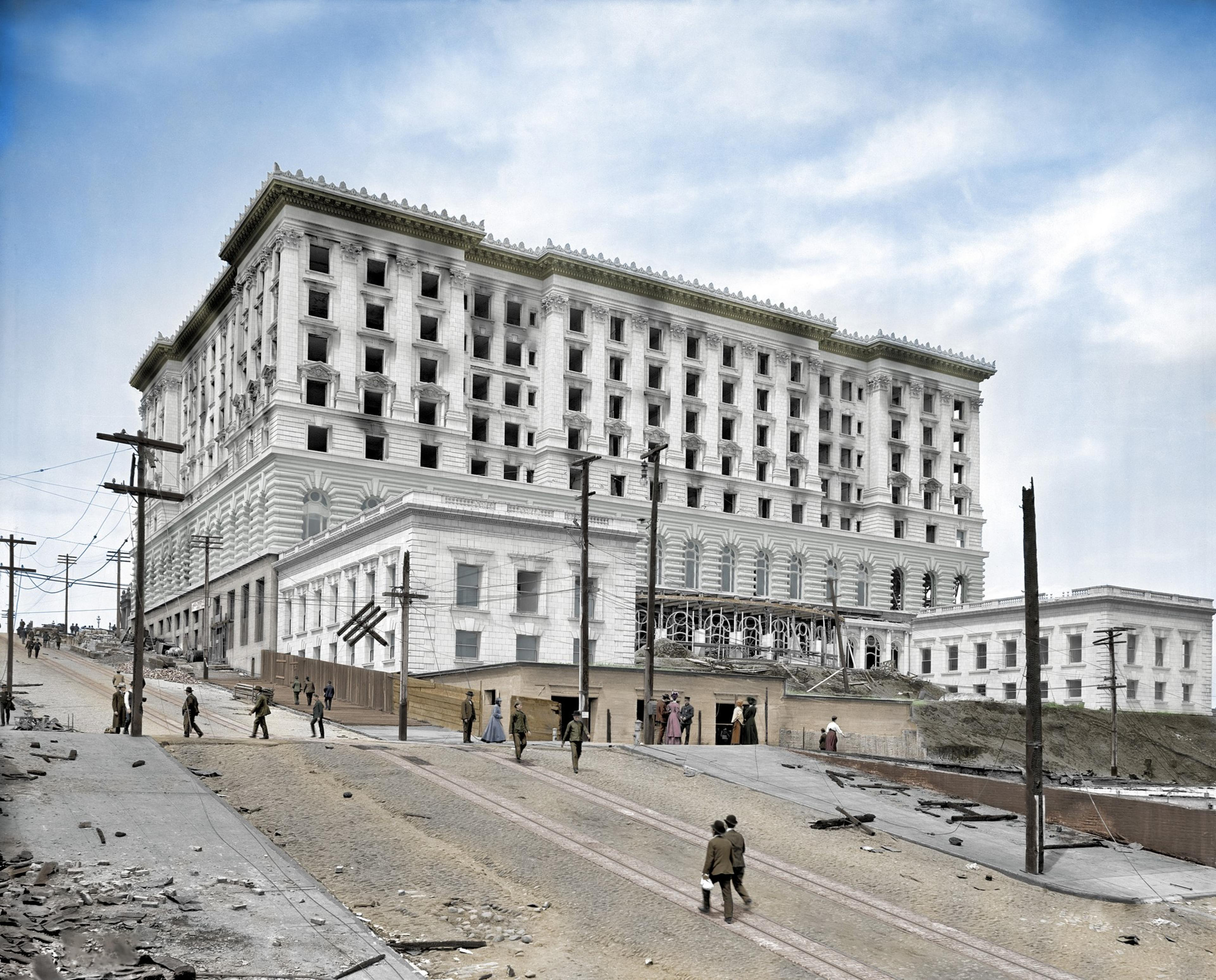The elegant Fairmont Hotel atop Nob Hill has long been the choice of global leaders, and the coming Asia-Pacific Economic Cooperation summit will be no different. Nicknamed “White House of the West,” the hotel has hosted every U.S. president alive since its opening—with the exception of former President Donald Trump.
President Joe Biden is expected to stay in the hotel for the second time this year starting Tuesday.
Turning to history explains the Fairmont’s connection to the political sphere—and reveals how the nine-story Edwardian hotel at 950 Mason St. almost didn’t open at all.
RELATED: San Francisco’s Fairmont Hotel Concierge Spills on Lifestyles of the Rich and Demanding
The tale begins with James Fair, a treasure-seeker who moved to San Francisco in 1849 in search of gold but became rich from silver instead. He was notorious for his dalliances—including an affair with headmistress and future San Francisco ghost (opens in new tab) Miss Mary Lake—and his wife divorced him in 1883 on grounds of “habitual adultery.” She was forced to raise their four children on her own.
Fair bought the Nob Hill property and passed the land down to his two daughters, along with the wish they build a hotel there someday. The daughters, Theresa Fair Oelrichs and Virginia Fair Vanderbilt, honored his wish—but they didn’t keep the hotel. They sold their interests shortly after its construction, only days before the 1906 earthquake and fire leveled the city.

The grande dame was, in fact, slated to open the morning the earthquake struck, April 18, 1906. Though the building survived, its elaborate interior was completely destroyed.
One year later to the day, the Fairmont rose from the ashes in the most spectacular of ways: with an over-the-top party that included 13,000 oysters, rivers of Champagne and fireworks. The rebirth came thanks to local architect Julia Morgan, who helped pioneer the use of reinforced concrete and went on to design Hearst Castle.
“It’s women’s leadership that created this place,” said Ahcene Mklat, the Fairmont’s food and beverage manager. “The two daughters built it, and a woman designed it.”
Morgan, who would become one of the country’s most famous architects, stepped up for a job no one else wanted.
“It took this newly graduated Berkeley student to take the risk,” Mklat said.
The hotel has accumulated historic achievements at the speed of the cable car line racing down California Street. It was the site of the drafting of the U.N. Charter (opens in new tab), a distinction noted by the panoply of flags hanging over the entrance, one for each member country that participated. It housed the city’s first post-Prohibition cocktail bar, the Timothy Pflueger-designed Cirque Room.

The Fairmont also likely had what was the country’s first concierge program, thanks to the pioneering Tom Wolfe. And it’s the first place where Tony Bennett sang his famed “I Left My Heart in San Francisco.” A life-size statue outside commemorates the city’s beloved baritone, who died at age 96 this July.
Consequently, the Fairmont is the kind of place that engenders emotional attachments spanning generations.
At the genteel Laurel Court restaurant, a widow recently went in for her first solo meal after having visited the hotel many times over the years with her husband. Mothers bring their daughters to the same high tea service—which has existed since the hotel first opened in 1907—they attended as girls with their own mothers. It’s the site of the kitschy-yet-irresistible tiki bar Tonga Room, one of the few places in the world where it rains inside.

But it’s the hotel’s stately interior that commands attention as a destination for world leaders. The front lobby is clad with green marble and gold, and the walls are decorated with Venetian mirrors that the Fair sisters brought back from their European travels.
The penthouse is a stately, full-floor residence fit for kings—and where kings have stayed (King Charles was a guest back when he was prince)—and includes a Moorish billiard room, a two-floor library with a secret passage and an expansive terrace with city views.
As if all that wasn’t enough, there’s also the person who may be the first concierge in the U.S., still working in his 80s to take care of guests’ every need.
“I love what I do,” Wolfe said. “And I do what I love.”
Correction: This story has been updated with the correct address of the hotel.
